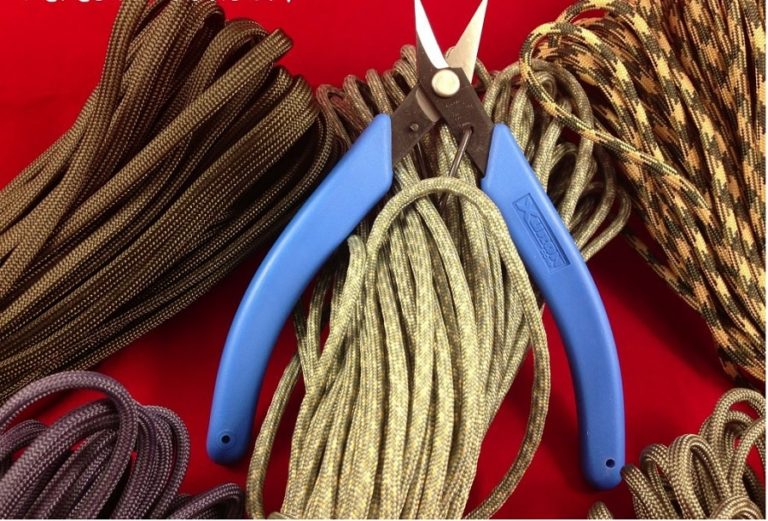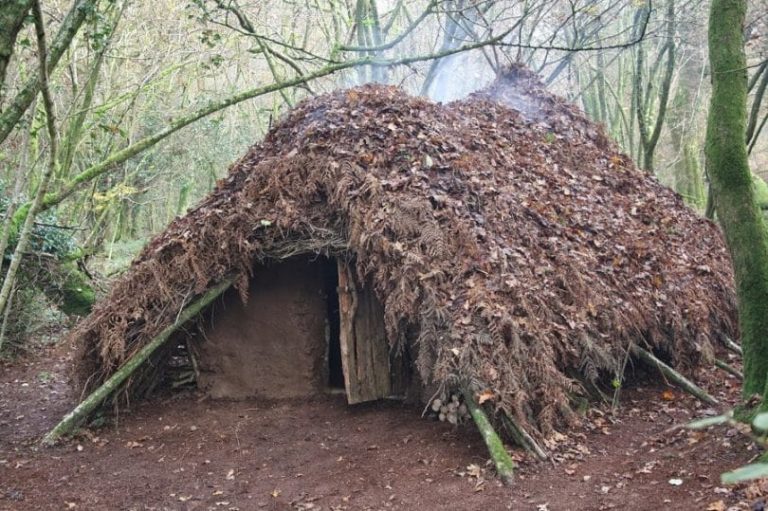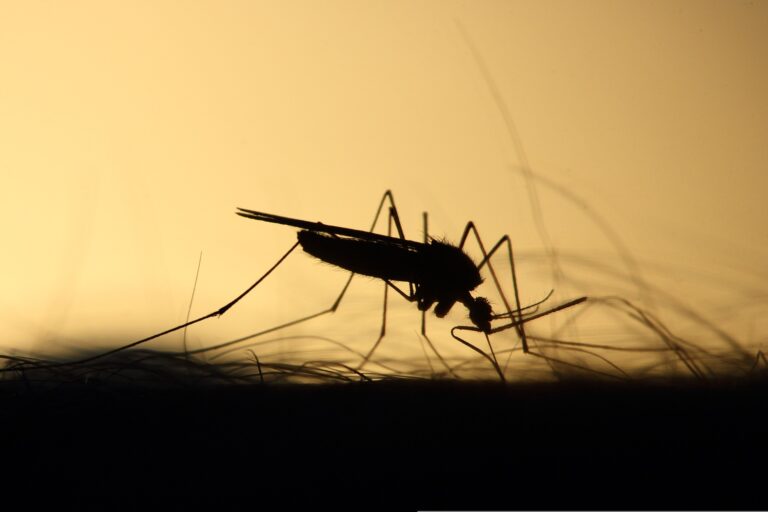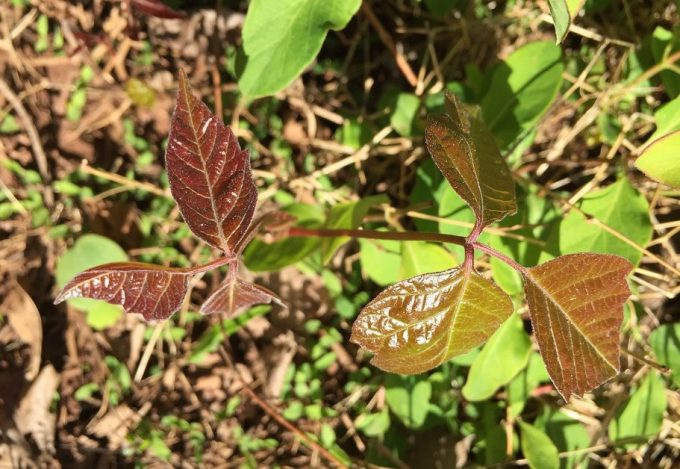What is Gore-Tex®: When and Where You Can Use It
There are lots of materials you can wear outdoors, but few are as good as Gore-Tex®. So if you’re wondering what is Gore Tex® and how it can become your best friend on your next hiking trip, we’ll tell you all about that. Since it’s one of the most hyped-up fabrics, preferred by most outdoors men, you should start finding more about how it actually works.
And we’ll also answer one more burning question: is Gore-Tex® really all that good or is it more marketing than anything else?
Why should you buy Gore-Tex® items?
With all the awesome characteristics of Gore-Tex®, there are lots of things made from it you can get, like:
Jackets – A chilly wind can get to your bones, and a sweaty back is the most uncomfortable, so a Gore-Tex® jacket is always appropriate.
Pants – If you’re skiing, fishing or even hiking, you want water out of your pants so you can keep going.
Gloves – Especially in cold weather, you want something that keeps your hands warm, dry and safe from freezing, so your fingers stay intact.
Hats – Whether it’s raining or you’re in full sun, you definitely need protection from both water and the sun. So keep your head cool, and get a Gore-Tex® hat that protects you from UV rays, apart from all its other benefits.
Leggings – When you need extra warmth but without the sweat, a moisture-wicking inner layer is great for your winter expeditions.
How it’s made
The fabrics used for manufacturing the Gore-Tex® material are:
Nylon
Everybody’s heard about nylon, and you must have a few things made from this material too.
And you probably enjoy wearing them for all sorts of high-impact activities, especially outdoors because nylon:
- Is resistant to UV rays – So when you’re out for hours at a time, you won’t have to worry about getting sunburnt under your clothes, like you would under more vaporous layers.
- Is sturdy – That means you don’t have to worry about scratches, punctures, and tears as much as you would with cotton, for instance.
- Is light – When wearing nylon, you don’t even feel like you have something on. It’s basically like the Emperor’s clothing, but everyone can see them.
- Is waterproof – If you’re caught in a rain, that won’t get beneath the nylon layer, making you feel all uncomfortable.
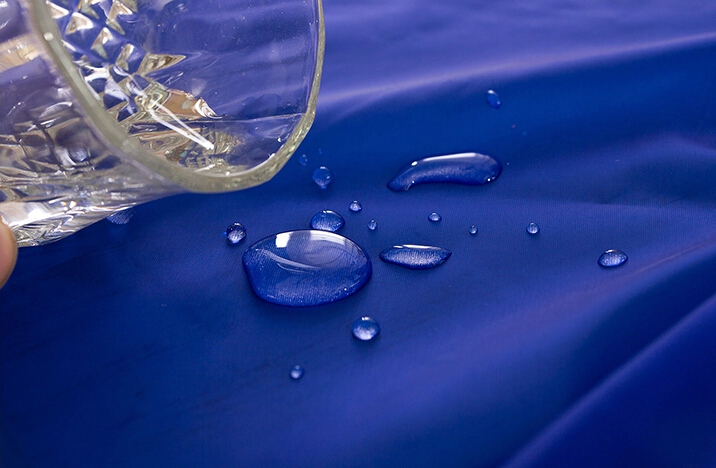
The downside of nylon?
Since it’s waterproof and stops all water from penetrating it from the outside, that means it stops all water escaping from the inside. Basically, you’re stuck with a lot of sweat if you’re doing a lot of exhausting exercises, which rapidly becomes unpleasant.
The conclusion: nylon rocks, but not for too long.
That’s how the need for a better fabric arose. Something that can do all the cool things that nylon does, but also lets your skin breathe: Gore-Tex®.
The other two layers
The ingenuity behind the making of Gore-Tex® consists of one simple concept: layers. If nylon alone can’t do the job, you need to add more stuff, like:
- Polytetrafluoroethylene – Yes, this is a difficult one, but you can call it simply PTFE or Teflon®. And chances are you’ve heard about it before if you have non-stick pans since it’s what makes them like that.
- Polyurethane coating – Improving the breathability characteristic, this layer is really necessary for the creation of Gore-Tex®.
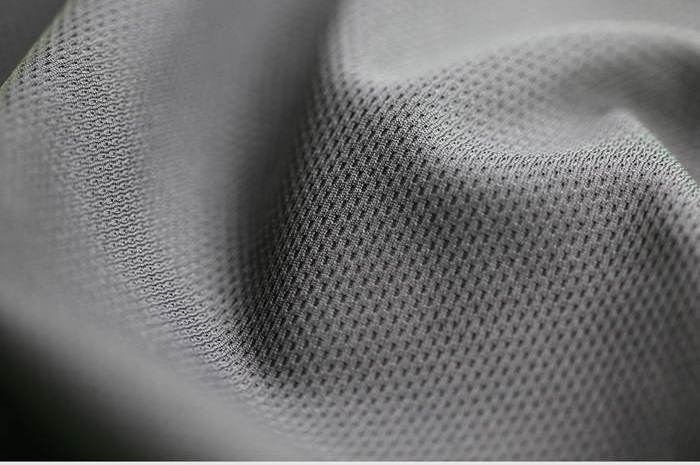
But even if these layers rock, they couldn’t do the job alone, without nylon. Plus, there’s another important addition to the whole technology: pores, lots of them.
Almost 14 million pores for each square millimeter.
These pores have to be:
- Small enough so that rainwater doesn’t get in from the outside.
- Big enough so your perspiration can get out, helping you feel dry.
What it actually is
With that being said, the Gore-Tex® material is basically two things in one, if you do a quick search on their official website:
A membrane
This consists of lots and lots of micropores, which make it:
Waterproof
There are lots of waterproof materials out there, so it’s important to note that Gore-Tex® especially has a renowned high quality amongst them because:
- It doesn’t leak.
- It doesn’t wear out with age, becoming less resistant to water.
- It’s not waterproof just during mild rains. It can save you when it’s raining cats and dogs, or even when you’re submerged under water.
- It’s thoroughly tested, so it can endure really high pressures and reach the highest standards on the market.
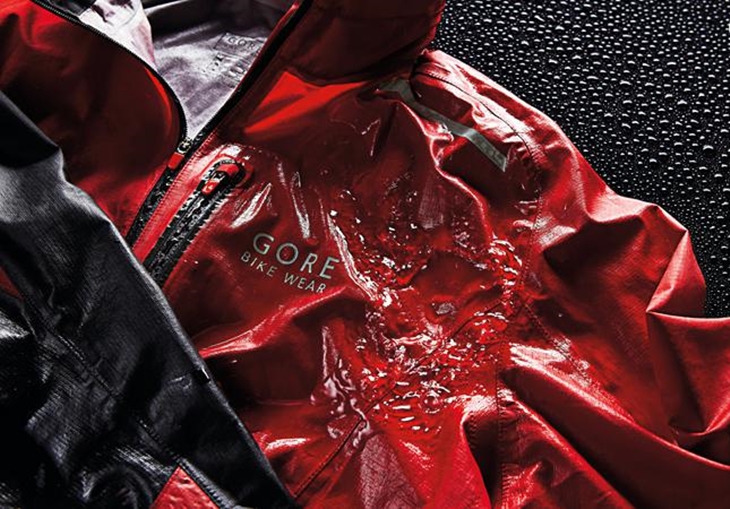
And you really need waterproof fabrics when you’re outdoors for long, not just because you can become quickly uncomfortable if you get wet from all the rain. Check out our article on how to waterproof your rainwear using GoreTex spray for more options.
But non-wicking fabrics make you lose body heat fast, which means you can even become hypothermic in certain low-temperature conditions.
Windproof
Again, there are lots of fabrics on the market which are resistant o wind, and you surely have some of those in your closet too. Fleece and nylon are some of these, but only if the wind doesn’t whisk you off from Kansas, Dorothy.
See also: HyVent vs Gore-Tex: The Watertight Waterproofing Debate
So you can ask yourself this: is there a standard that measures how windproof a fabric is? Why, yes. It’s called air permeability, and it’s measured in cfm, which tells you how much air can go through one cubic foot of material in a minute. 1 cfm is the ideal, below is even better, and Gore-Tex® fabrics gravitate around this measure.
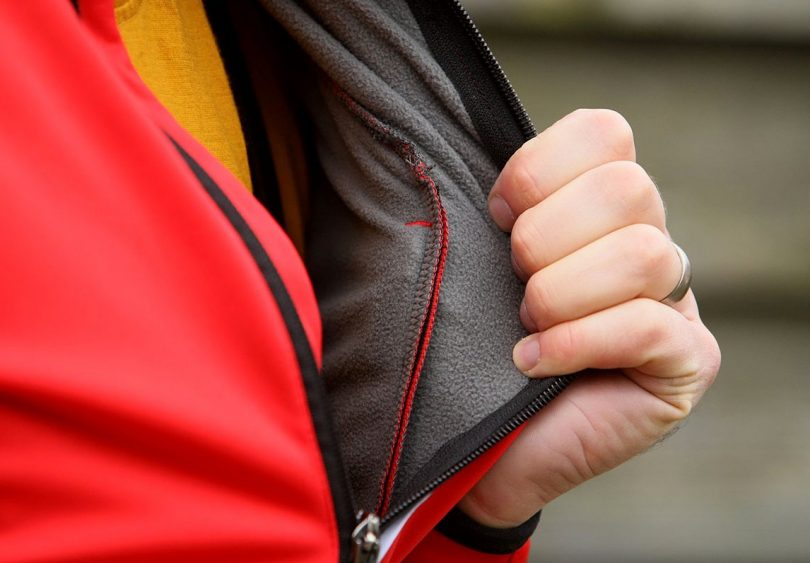
As such, with Gore-Tex® you can rest assured:
- There will be no chills to deter you from going forward.
- You’ll lose no precious heat through your clothing.
- You won’t get cold.
- You’ll remain comfortable and insulated.
Breathable
There’s actually a common misconception as to what this term refers to. “Something that lets your skin breathe” doesn’t cut it because:
Breathability doesn’t equal air circulation through the fabric. Instead, it’s a measure of how moisture wicking it is, preventing perspiration from getting trapped inside.
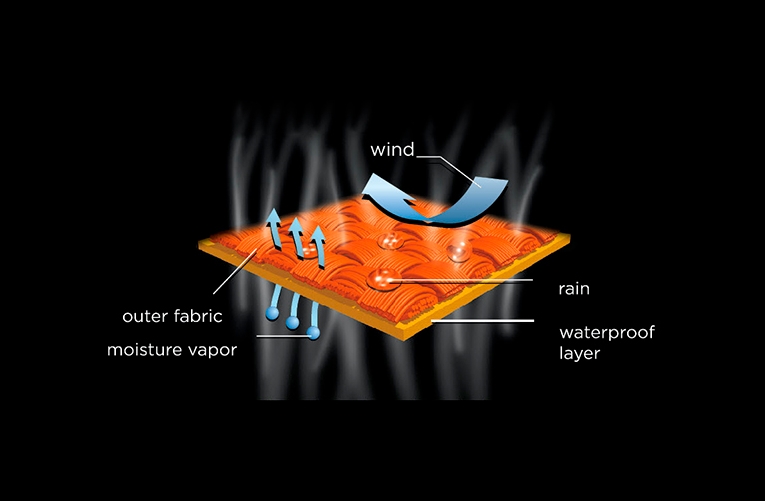
So why do you need this?
- If you’re doing high-impact activities, you want to stay dry.
- Sweat makes you uncomfortable.
- When you’re all sweaty and wet, you can lose heat faster.
- Being sweaty makes you more prone to catching a cold.
A laminate
All these materials aren’t the only ones that make Gore-Tex® so good, it’s the way they’re tied too. So basically Gore-Tex® takes this membrane and tethers it between other support fabrics:
- A top notch lining.
And/ or:
- Exterior textiles
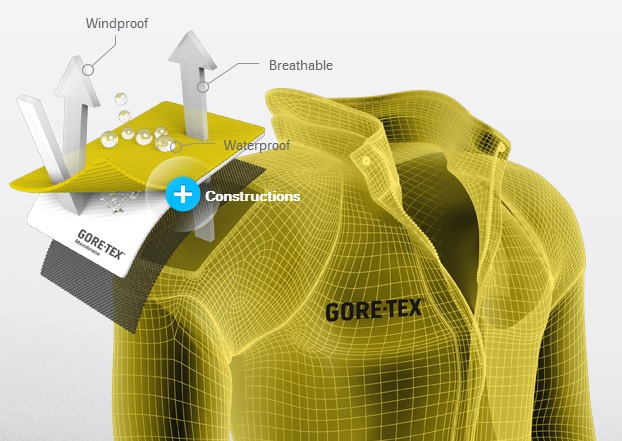
That turns Gore-Tex® into a laminate, with various possible designs such as:
The two layers design
In this case, the Gore-Tex® membrane is only connected with an outer fabric which renders it:
- Appropriate for most outdoor adventures.
- Really comfortable since it has a separate lining.
- Very versatile.
- Not really insulating, so you need other layers to help you keep warm and dry.
The three layers design
This means that Gore-Tex® is now linked to both sorts of support fabrics, rendering it:
- With all the above characteristics for the two layers.
- With less friction between layers, making it less prone to tears.
- More durable.
- More insulating.
The Z liner design
Gore-Tex® is linked to both support fabrics, but:
- The outer fabric is really light.
- There’s a liner that comes between the lining and the outside fabric.
- There aren’t as many sealed seams, which makes this design more versatile and easily customizable by the manufacturer.
- It’s not insulating on its own, so you’ll have to add that layer yourself.
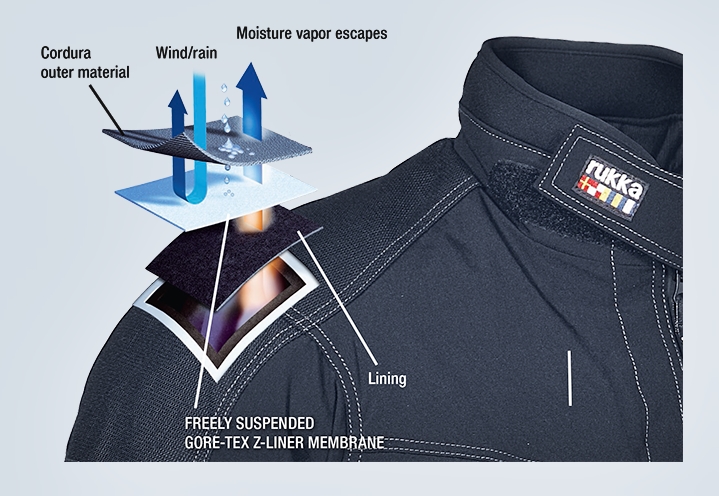
And speaking of seams and stitching, you should know that Gore-Tex®comes with something new here too:
The GORE-SEAM® tape
Since most leaks occur because the stitching isn’t that good or because it wears down with age, making it prone to leaks, the Gore-Tex® seams are sealed:
- By experts.
- In certified factories.
- Only using the patented Gore-Tex® technology.
That’s what helps make Gore-Tex® waterproof even at the seams.
The problems with Gore-Tex®
All this sounds too good to be true, right?
Well, some people tried using this fabric, and they do have some things to hold it accountable for.
Is it all that waterproof and breathable?
The first thing many critics argue with is the ability of Gore-Tex® to be both waterproof and moisture-wicking at the same time because it can’t both allow and prevent water passing through it.
[the_ad_group id=”22″]
The fault-finders claim that Gore-Tex® has set its own standards for these two concepts, and it can only comply with them in lab conditions. That makes it false advertising at worst, and questionable at best.

Some even say they’ve tested Gore-Tex® for prolonged periods of time themselves, during rains and generally lots of moisture, finding that:
- Long term use weakens even the Gore-Tex® fabric.
- You can become both sweaty and wet from rain at the same time.
Isn’t it just lots of marketing?
Plain and simple, Gore-Tex® isn’t the end all of every material because there isn’t such a thing as perfect. But the ads claim that it is, which makes critics less willing to cut it more slack arguing that the Gore-Tex® ads are:
- Exaggerated.
- Dishonest.
- Repetitive.
- Prone to lawsuits.
- Discredited by various reviewers, especially under harsh weather conditions.
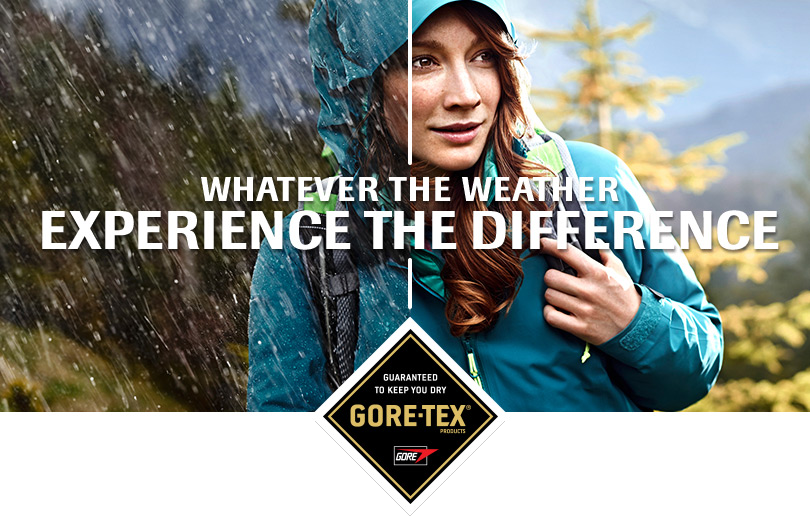
How many false reviews are there?
The critics also state that there are lots of false reviews on the market because lots of websites:
- Just rephrase the press releases.
- Don’t actually test the product.
- Don’t even try to present the opposite point of view.
- Ignore the bad aspects.

The main issue the critics refer to here is the same “waterproof, yet breathable at the same time” thing. They say it’s fallacious, if not down-right false to argue that a fabric may have really small micropores that don’t let water get in but allow it to get out.
Can public opinion create a stronger perceived quality than the real quality?
The fault-finders say that’s the case here because Gore-Tex® invests huge amounts of money in their ads so:
- Customers actually believe Gore-Tex® is the best, even when they’re proved wrong.
- A strong anti-current is impossible to emerge because of bashing.
- People’s fear of being uncomfortable outdoors makes them believe there’s an actual solution for this.
An answer to these problems
All these issues actually gravitate around one main issue: perspiration. Because in all honesty, you can’t condemn a brand for:
- Exaggerated ads. That’s what ads do, they present only the advantages because they want to sell.
- Lazy reviewers that don’t do their job properly.
- Public opinion and perceived quality. There will always be a difference between actual quality and its image, so don’t blame a brand when this difference leans in its favor.
These are all fake issues, so let’s address the real one: how can a material be waterproof and moisture-wicking at the same time?
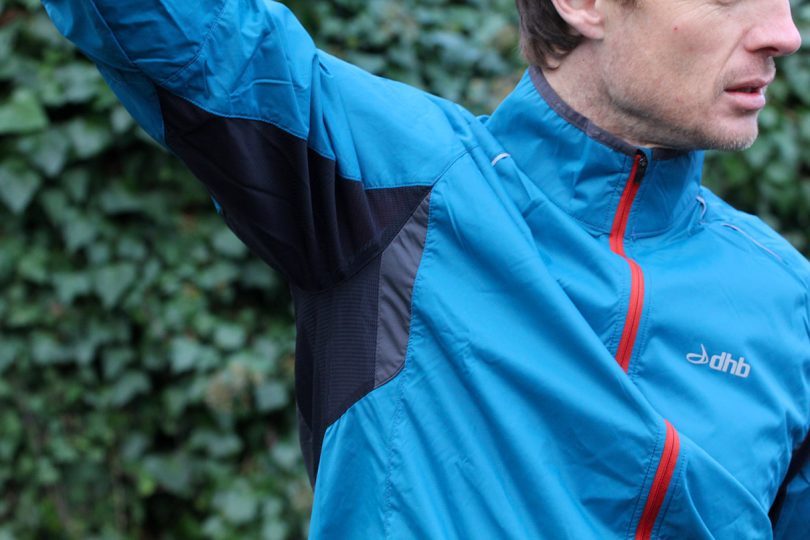
Remember the three fabrics used for making Gore-Tex®? Nylon, Teflon, and Polyurethane are layered one on top of the other, with Teflon in the middle. This fabric:
- Is slippery and non-stick, therefore waterproof.
- In Gore-Tex®, Teflon is filled with micropores, which are incredibly small.
And the key lies here:
- Sweat drops are smaller than these micropores, which are smaller than water drops.
The problem for many critics is: how can sweat drops be smaller than water drops?
Easy. Because at first when you sweat, perspiration comes in the form of a gas, not water drops. These gas molecules aren’t connected from the beginning, and Gore-Tex® uses the process of diffusion to get them out before they get the chance of forming water molecules.
- So what if you sweat, like a lot, and you’re also submerged in water?
Basically, if you’re hiking in the wilderness of the Amazon and a tribe of cannibals puts you in a human-size pot to turn you into soup. Yes, at this point, we’re sorry to say that Gore-Tex® won’t keep you safe from becoming uncomfortably wet. If that’s your biggest problem.
And for the critics out there, yes, we know we’ve exaggerated here. But in extreme conditions, no material is 100% perfect, we just believe that Gore-Tex® is 99% perfect, which is really all it takes for most people.

We also love Gore-Tex® because it’s a fabric composed out of layers, and we love layers.
- The inner lining – This is hydrophilic (water-loving), meaning it absorbs all your sweat when it’s in gaseous form, so your skin remains dry. Through the process of diffusion, the sweat gas molecules pass to:
- The outer fabric – This is hydrophobic (water-hating) and it’s made from a polymer that repels water. This polymer is so advanced, that it even works under heavy rain, or big water pressure so that it’s waterproof. Simultaneously, this layer is also microporous, so the gas molecules of your sweat can pass through it too. Basically, this layer helps you remain insulated and warm.
Different Gore-Tex® options
At this point, you’ve probably decided whether or not Gore-Tex® is the stuff for you. But here comes the problem: it isn’t just ONE fabric, you have many Gore-Tex® materials and products to choose from. These are:
- Gore-Tex®.
- Gore-Tex® Active.
- Gore-Tex® Pro.
Gore-Tex®
- Versatile.
- Can be used in both outdoor and urban conditions.
- You can use it all year-round.
- It’s windproof, waterproof and breathable.
- It can come in two or three layers, as we discussed above.
- The twolayers design is very lightweight and minimalistic, making in compact and travel-friendly. You can use it for saving space and for activities that require you wear very light clothing, such as running.
- The threelayers design is better if you’re looking for additional insulation and extra warmth, which means you can use it in extremely cold weather. So this is good for hiking in winter or skiing.
Gore-Tex® Active
- It’s perfect especially for active people, who do lots of aerobic, high-impact activities.
- You can use this fabric for running marathons, rock climbing or cross-country.
- This material is extremely breathable and it’s even more performant at letting sweat out through diffusion.
- This fabric is strong and tightly-knit, so it’s very insulating. For this purpose, the three layer design is generally used.
- The weight of Gore-Tex® Active is extremely low too.
- It’s very soft and comfortable.
Gore-Tex® Pro
- This is the sturdiest of the three fabrics, making it perfect for demanding activities like mountaineering and skiing.
- It’s also the best of the three fabrics if long-term use is your main goal.
- Harsh conditions and extreme weather require above-than-average protection, therefore a strong material that holds. With its three-layer design, Gore-Tex® Pro does exactly that.
- Most such jackets have stretch panels and thick netting, of about 70 deniers, if not more.
- Even if this fabric is thick and strong, that doesn’t make it less elastic. The Gore-Tex® technology aims to keep you comfortable at all times, and functionality is one of their top priorities, so you can move freely even with Gore-Tex® Pro.
Will you get something made from Gore-Tex®?
With that being said, we’re curious to know which side you’re on. Have you tried Gore-Tex® and liked it, or do you think it’s not that good?
[the_ad_group id=”23″]
What Gore-Tex® things do you have? What will you get? Are there other materials with similar characteristics you prefer, like maybe eVent or SympaTex?
Still looking for waterproof rainwear? See our article on the how to choose the best Gore-Tex poncho to help you with more choices.

Is there something we missed in this article? Let us know what you think, the comments are right below.

